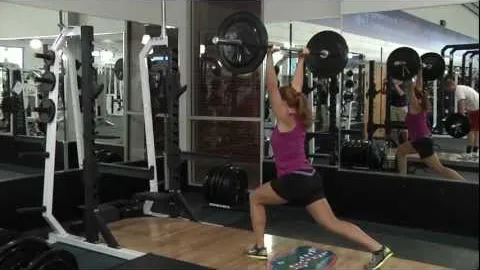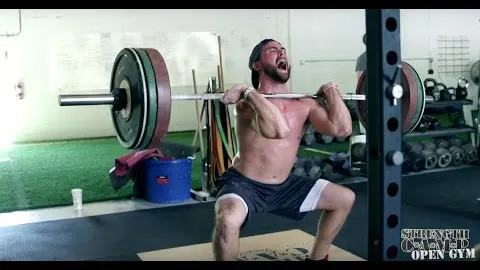


Olympic Lifting: The Ultimate Guide to a Powerful and Explosive Workout
Keywords: Olympic lifting, exercise, powerful, explosive workout
Introduction
Olympic lifting is a dynamic and technical form of strength training that involves two primary lifts – the snatch and the clean and jerk. These lifts require a combination of strength, power, speed, coordination, flexibility, and focus, making them a fantastic way to build full-body strength and explosiveness. In this comprehensive guide, we will dive deep into the world of Olympic lifting, exploring its benefits, techniques, and training strategies. Whether you are a beginner or an experienced lifter, this guide will provide you with the knowledge and tools to excel in Olympic lifting.
The Benefits of Olympic Lifting
Full-body Strengthening: Olympic lifting engages multiple muscle groups, including the legs, hips, back, shoulders, and arms. By targeting so many muscles simultaneously, these exercises help develop functional strength and alleviate muscle imbalances.
Explosive Power: The explosive nature of Olympic lifting exercises translates directly into improved performance in sports that require speed, agility, and power. By focusing on generating power from the lower body and transferring it through the upper body, athletes can enhance their overall explosiveness.
Improved Sports Performance: Olympic lifting movements mimic the actions involved in many sports, such as jumping, throwing, and accelerating. By training these movements, athletes can improve their performance in their respective sports and gain a competitive edge.
Enhanced Mobility and Flexibility: Proper Olympic lifting technique requires a great deal of mobility and flexibility. Consistently practicing these exercises can lead to improved joint mobility, increased range of motion, and better overall flexibility.
The Snatch
The snatch is the first Olympic lifting movement we will delve into. This exercise involves lifting a weighted barbell from the floor to an overhead position in one smooth motion. The snatch challenges your speed, coordination, and power while targeting muscles throughout the body.
Starting Position: Stand with your feet hip-width apart and toes pointing slightly outward. Grip the barbell slightly wider than shoulder-width, with an overhand grip. Keep your back straight, chest up, and eyes focused forward.
First Pull: Extend your legs, bringing the barbell off the floor. As you lift, keep the barbell close to your body and maintain a neutral spine. Your shoulders should be slightly in front of the barbell, and your hips should rise at the same rate as your shoulders.
Second Pull: Once the barbell passes your knees, explosively extend your hips, knees, and ankles, driving the barbell upward. Pull the barbell directly toward your body, smoothly transitioning into the final phase of the lift.
Overhead Position: As the barbell reaches its maximum height, quickly drop beneath it by shrugging your shoulders and pulling yourself downward. Catch the barbell overhead in a stable position with locked-out elbows and your feet in a squat stance.
The Clean and Jerk
The clean and jerk is the second Olympic lifting movement we will discuss. This exercise involves two distinct phases: the clean and the jerk. The clean focuses on explosively lifting the barbell to shoulder height, while the jerk involves driving the barbell overhead and catching it with locked-out arms.
Starting Position: Begin with the barbell on the floor, similar to the setup for the snatch. Grip the barbell with a slightly wider than shoulder-width grip and assume a shoulder-width stance. Your back should be straight, chest up, and eyes forward.
The Clean: Initiate the lift by extending your legs, explosively jumping upward. As the barbell passes knee level, vigorously extend your hips, knees, and ankles, pulling the barbell as high as possible. Catch the barbell at shoulder height, resting it on your front deltoids and clavicles.
The Jerk: Lower yourself into a partial squat position after the clean, preparing for the jerk phase. Dip your body by flexing at the hips and knees while keeping your chest up, then quickly extend your legs, drive the barbell upward, and lockout your elbows to catch the barbell overhead.
Recovering: After completing the jerk, stabilize the barbell overhead and stand tall. Control the descent of the barbell back to the front rack position, then initiate the downward motion of the clean by lowering the barbell back to the floor.
Training Strategies for Olympic Lifting
Start with Proper Form: Before focusing on heavy weights, prioritize mastering the correct technique for each lift. Seek the guidance of a qualified coach to ensure you are performing the lifts safely and efficiently.
Progressive Overload: Gradually increase the weight of your lifts over time to challenge your body and promote strength gains. Begin with lighter weights to build a solid foundation, then gradually increase the load as your technique improves.
Train for Explosiveness: To enhance power output, incorporate explosive exercises into your training routine. Plyometric exercises, such as box jumps and medicine ball throws, can help improve your ability to generate force quickly.
Include Assistance Exercises: Incorporate assistance exercises that target specific muscles and movement patterns involved in Olympic lifting. This can include exercises like front squats, Romanian deadlifts, and high pulls.
Conclusion
Olympic lifting offers a unique and highly effective approach to strength training. By incorporating the snatch and clean and jerk into your fitness routine, you can experience the numerous benefits of increased full-body strength, explosive power, improved sports performance, and enhanced flexibility. However, it is crucial to prioritize proper form and gradually progress your weights to minimize the risk of injury. With dedication, consistency, and guidance, Olympic lifting can become an integral part of your fitness journey, helping you reach new heights in strength and performance.
If you're looking for a gym, fitness club or yoga studio, you've come to the right place.
You can find information about gyms in your area. Browse catalog of gyms and find gyms with classes which are you looking for.
On gym page you can find simple information like address, phone or website. You can find list of available classes. You can check availability of personal training or small group classes. On place page you can also see information about open hours.
You can find gyms near you with amenities, courts, studios and equipments.
Use our map to find gym at your city or district.
In Gym Navigator you can find list of exercises with movies for many body parts.
You can browse exercises catalog and find exercises the best of you.
You can also find exercises grouped into workout plans, which you can use to improve you body. Each routine show you exercises one by one and give you possibility to count you progress and count down rest time.